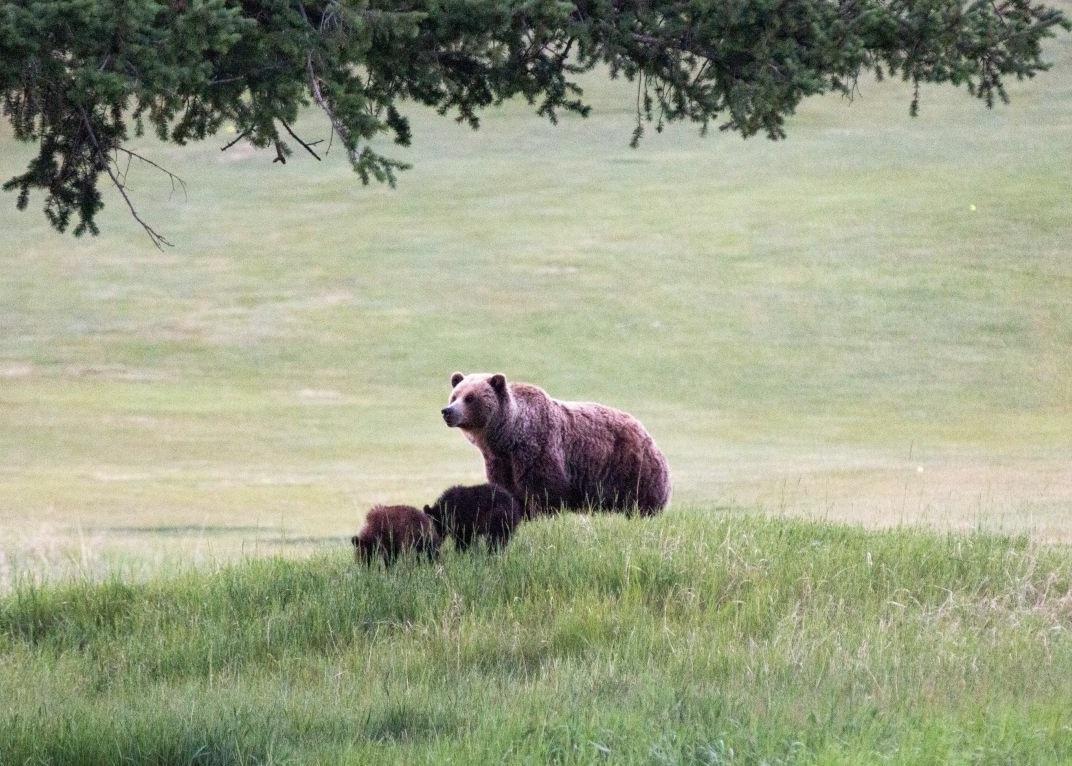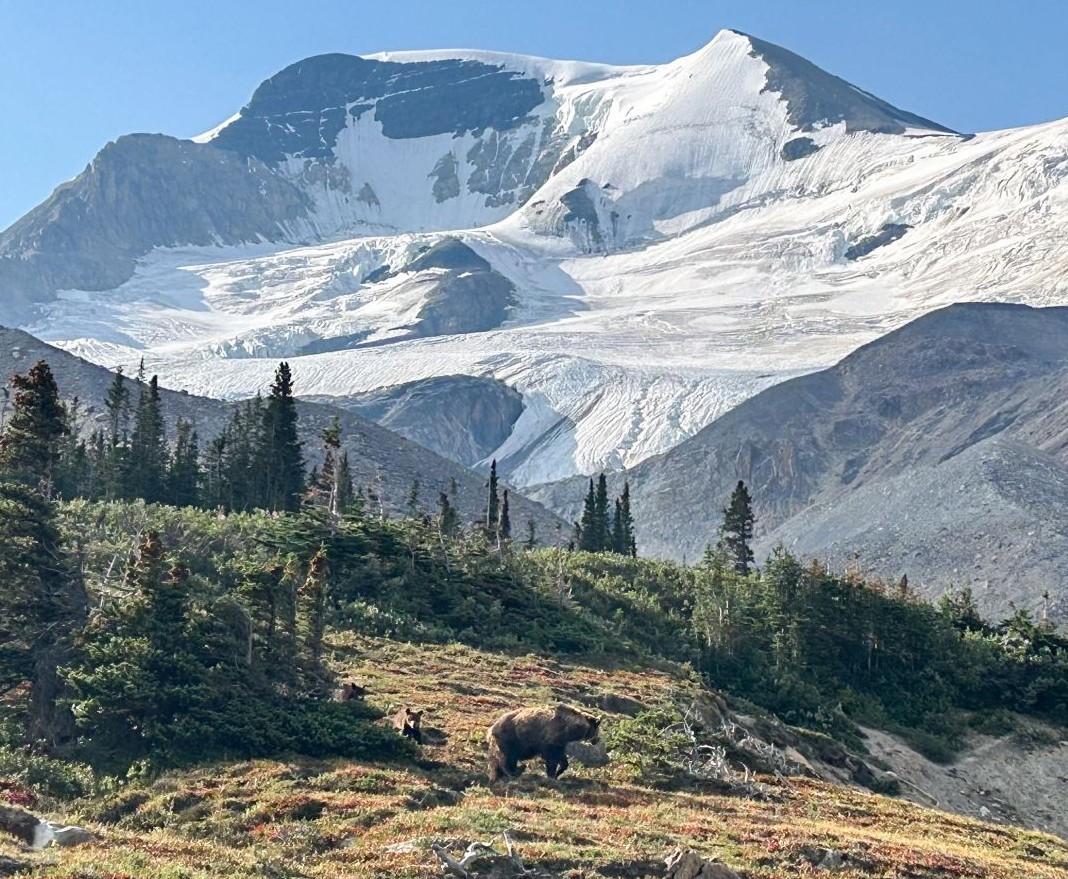
Parks Canada was forced to relocate food-conditioned grizzly bears within Jasper National Park/Parks Canada
Two recent events involving grizzly bears eating human food at picnic areas in Jasper National Park led to one bear family being relocated.
Parks Canada says that some bears in the Alberta mountain park have become familiar with the town and recreational areas as reliable places to find food. Non-native fruit trees are ripening and the number of people in the park is at a high. Bears living in constant proximity to people and residences are more likely to gain access to human food or garbage and end up in accidental aggressive physical encounters.
On July 24, a female grizzly bear with two cubs fed on human food at Lake Annette and Lake Edith.
As the bears approached the picnic area, people retreated to the safety of their vehicles. The female and cubs ate food left behind at two picnic sites. Later that day, the trio investigated and pulled items out of a bag on the shore at Lake Edith.
This female bear and cubs have been feeding in the valley bottom near the Jasper townsite since the middle of May. Parks Canada’s human-wildlife coexistence specialists have used a variety of actions to move the bears away from day-use areas, roadsides and the golf course. As the bears often fed in high human-use areas, many people and photographers watched them for extended periods of time and at close distances. This contributed to the bears becoming habituated to people.

Stopping to photograph bears can cause them to become habituated to humans/Parks Canada
Once a bear becomes food-conditioned and loses its caution towards humans, it is a risk to human safety and options for managing the bear become limited. Parks Canada considered several courses of action for this family. Relocation within the park is one option when it's no longer possible to safely manage a bear in its home range.
On July 27, Parks Canada captured the female bear and her cubs in a “family trap” and fitted the adult with a GPS collar. The family was relocated to a southern area of the park the next day. Using the GPS collar to track the bear’s movements allows early intervention if she comes close to high human-use areas or travels back towards the townsite.
This year was the first time this bear family needed intervention by human-wildlife coexistence specialists.
"Relocating this bear and her cubs away from high human-use areas keeps people safe and decreases the chance that she and her cubs will become further food conditioned, giving the bears a better chance for survival," said Parks Ccanada. "At the same time, trapping, immobilizing and relocating is stressful and risky for bears — particularly cubs. The bears relocated from Jasper townsite may now face new risks associated with being released into unfamiliar habitat that may already be occupied by other bears."
Staff continue to monitor and manage the bears daily. The family has been sighted along the Icefields Parkway (93N) near the Jasper and Banff national park boundary. Parks Canada asks people stay in their vehicles and don't stop to view the collared grizzly and cubs to prevent further habituation.

A grizzly is shown near the border of Jasper and Banff national parks on Aug. 1/Parks Canada
Another grizzly bear is being monitored after feeding on human food.
On July 26, a solo grizzly bear climbed onto a picnic table at the sixth bridge at Maligne Canyon and fed on human food when picnickers briefly left a table unattended. The bear moved away after 20 minutes and hasn’t been involved in any additional incidents since.
Parks staff continue to watch for this bear and are closely monitoring the situation.
To keep bears alive and wild in Jasper, Parks Canada says:
• Follow bare campsite rules. Never leave any food or scented items unattended.
• Do not approach or surround bears. Always maintain a safe distance (330 feet). Follow wildlife viewing restrictions and give wildlife space.
• If wildlife approaches you, move calmly to the safety of a hard-sided vehicle or shelter and take food and garbage with you if it is safe to do so.
• Keep pets on leash — it’s the law.
• If you see any bear in town or in a busy visitor area, report it immediately by calling Parks Canada Dispatch at 780-852-6155. Timely reporting is essential for staff to be able to change bear behavior. The potential for successful human-bear coexistence is higher with early intervention.

 Support Essential Coverage of Essential Places
Support Essential Coverage of Essential Places



